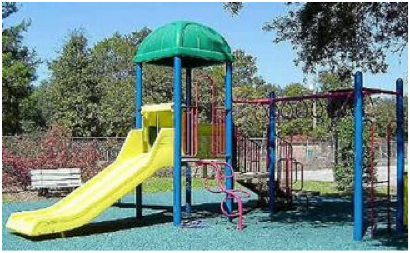
SUNSHINE COAST DAILY - Kids robbed of fun?
Janine Hill | 2nd August 2011
RUSTY slides and swings made from iron and heavy timbers have become memories in a push towards safer playgrounds over the past 20 years. But experts are now asking if we have gone too far.
Risk rather than safety has become the buzz word as experts look at whether or not benign playground equipment stunts children’s judgment and sense of fun.
Don Wark, managing director of playground company The Play Works, which has been involved in many important playground projects, including Pioneer Park at Landsborough, said discussions about the need to incorporate risk in play were increasing. An early-childhood specialist told a conference in Melbourne recently that some play equipment was too safe.
The specialist, Prue Walsh, was reported as saying that she was concerned about children who did not learn to take calculated risks.
And Kidsafe Western Australia acknowledges on its website that research suggests a level of risk during play benefits children.
“Insufficient playground novelty and challenge can lead to inappropriate risk-taking and prevent children from developing decision-making skills needed to make accurate risk judgments,” the website says.
Mr Wark said a growing school of thought was that children needed an element of risk not only for fun, but also for the sake of their development. He said adults could be doing children a disservice by taking away any sense of adventure or challenge in a bid to injury-proof them.
“What we’re beginning to see is that by wrapping kids up in cotton wool, we’re not encouraging them to make their own decisions,” he said.
“By adopting this ‘risk-aversion’, we don’t give them the opportunity to learn about risk.”
Mr Wark did not advocate a return to the rusty slides and heavy timber swings of childhoods 40 years ago, but said playground designs could better incorporate appropriate elements of risk while still meeting safety standards.
Life contained an element of risk and it was perhaps wise that children began learning how to deal with it early, he said.
“The risk of taking a fall, skinning knees – there’s a level of that that’s acceptable if children are learning about risk and how to take calculated risks themselves,” he said.
Mr Wark said difficulty in obtaining quantifiable research was perhaps the only thing that might hinder the development of playgrounds that incorporated risk.
“That’s what makes this whole move difficult, because we don’t have a way to do that. If we did have a way to quantify it, if we could fill in a number at the bottom of a form, it would be easy.”
He said authorities which commissioned playgrounds needed to remember that they were for children and other issues, such as insurance, were secondary.
Mr Wark said rope structures and maypoles for swinging provided some element of challenge for kids in today’s playground, but he predicted that more challenging equipment and designs would find their way into playgrounds. “It’s about giving things that kids will get excited about,” he said.
- Log in to post comments
